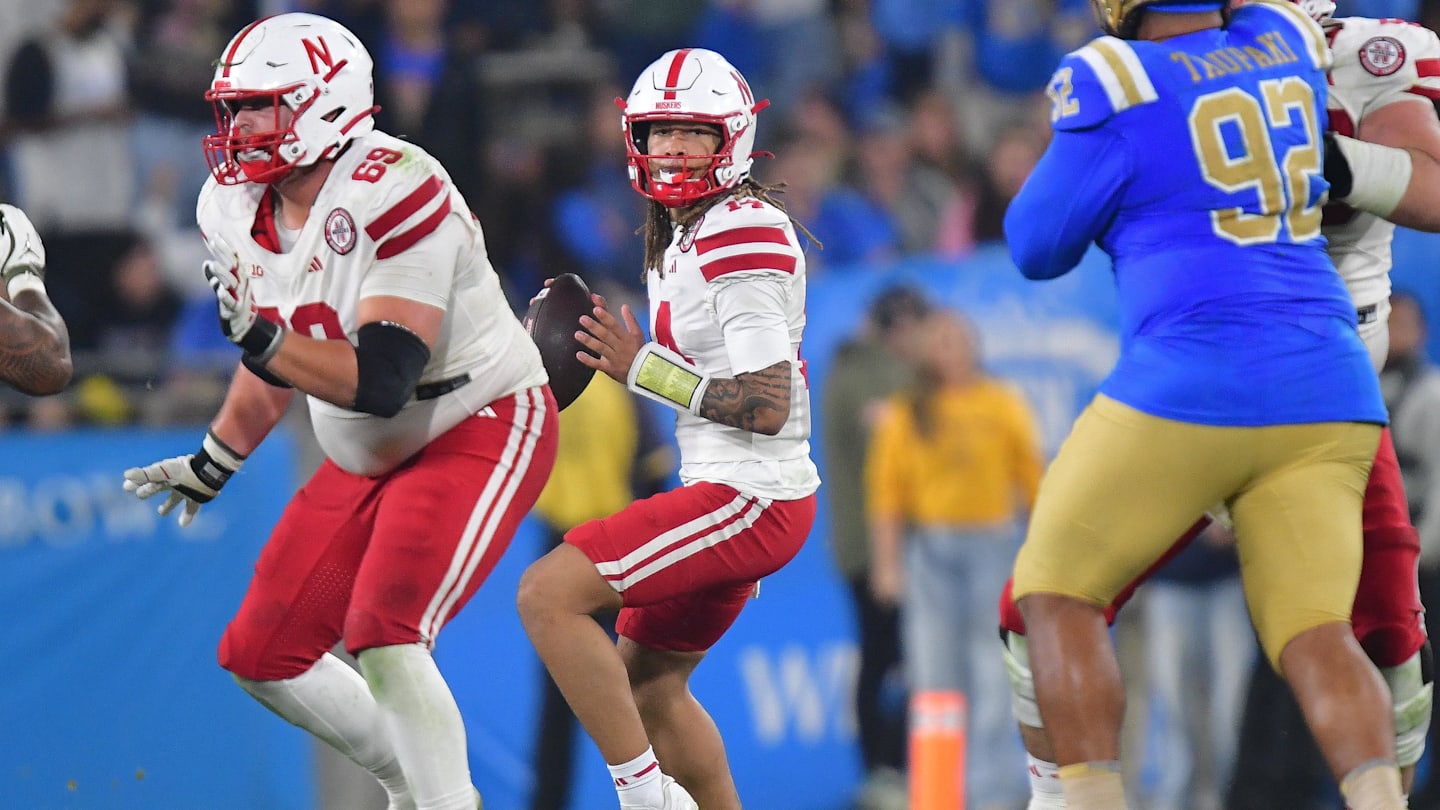Nebraska’s offense has officially entered elite territory. In Week 11, the Cornhuskers earned the No. 2 spot in PFSN’s College Football Offense Impact Metric, trailing only Notre Dame. The ranking reflects more than just raw scoring. It highlights Nebraska’s efficiency, versatility, and ability to generate impact plays across multiple phases. With a balanced attack and rising execution, the Huskers are proving they belong in the national conversation.
In Week 11 of the college football season, Nebraska’s offense continued its meteoric rise, earning the No. 2 spot nationally in PFSN’s CFB Offense Impact Metric with a score of 93.1, trailing only Notre Dame’s 95.9.
The Cornhuskers edged out fellow Big Ten riser Rutgers (91.6) and SEC contenders like Vanderbilt (91.5), Kentucky (90.9), and Georgia (90.9), showcasing a balanced, high-efficiency attack. Rounding out the top ten were Toledo, Ohio State, Texas A&M, and Ole Miss, all of whom posted strong offensive performances but fell short of Nebraska’s explosive output and consistency.
PFSN’s College Offense Impact (OFFi) metric offers a nuanced evaluation of offensive performance by assigning both a numerical score and a letter grade. Rather than relying solely on raw yardage or points, OFFi blends situational passing and rushing EPA with success rate metrics, carefully weighted by volume to reflect the true impact of a team’s scheme and execution.
Nebraska quarterback TJ Lateef runs against USC. / Kenny Larabee, KLIN
Nebraska edged UCLA in total offensive production during their Week 11 matchup, gaining 361 yards on just 54 plays for an impressive 6.68 yards per play. In contrast, UCLA ran 64 plays but managed only 348 yards, averaging 5.44 yards per snap. The efficiency gap proved decisive, as Nebraska found the end zone four times compared to UCLA’s three, underscoring the Huskers’ ability to maximize each possession.
In his first career start, TJ Lateef delivered a near-flawless performance, completing 13-of-15 passes for 205 yards and three touchdowns to spark Nebraska’s offense during their 28-21 victory. Emmett Johnson made history alongside him, becoming the first Husker running back to record 100 yards rushing and receiving in the same game. Johnson piled up 129 rushing yards and a touchdown on 28 carries, while adding three receptions for a career-high 103 yards, including scoring grabs of 56 and 40 yards.
With this outing, he also became the first Nebraska back since 2017 to notch three consecutive 100-yard games in Big Ten play, pushing his season total to 1,131 rushing yards.
Through eleven weeks, Nebraska ranks fifth in the Big Ten for total passing production, completing 215 of 289 attempts (74.4%) for 2,482 yards, 22 touchdowns, and six interceptions. The Huskers average 8.6 yards per attempt and 248.2 passing yards per game, placing them just behind Indiana and Ohio State in overall efficiency.
Rutgers leads the conference with 2,774 passing yards and a 277.4 yards-per-game clip, while USC and Ohio State round out the top three in volume and impact. Nebraska’s consistency and scoring punch keep them firmly in the upper tier of Big Ten aerial attacks.
Nebraska Cornhuskers running back Emmett Johnson (21) runs the ball against the UCLA Bruins during the second half at the Rose Bowl. / Gary A. Vasquez-Imagn Images
Nebraska’s ascent in the national offensive rankings is no fluke. It’s the product of precision, volume, and playmaking power. With Lateef’s efficient debut, Johnson’s historic versatility, and a passing attack that ranks among the Big Ten’s best, the Huskers are proving they can compete with and outperform some of college football’s most storied programs.
Stay up to date on all things Huskers by bookmarking Nebraska Cornhuskers On SI, subscribing to HuskerMax on YouTube, and visiting HuskerMax.com daily.

